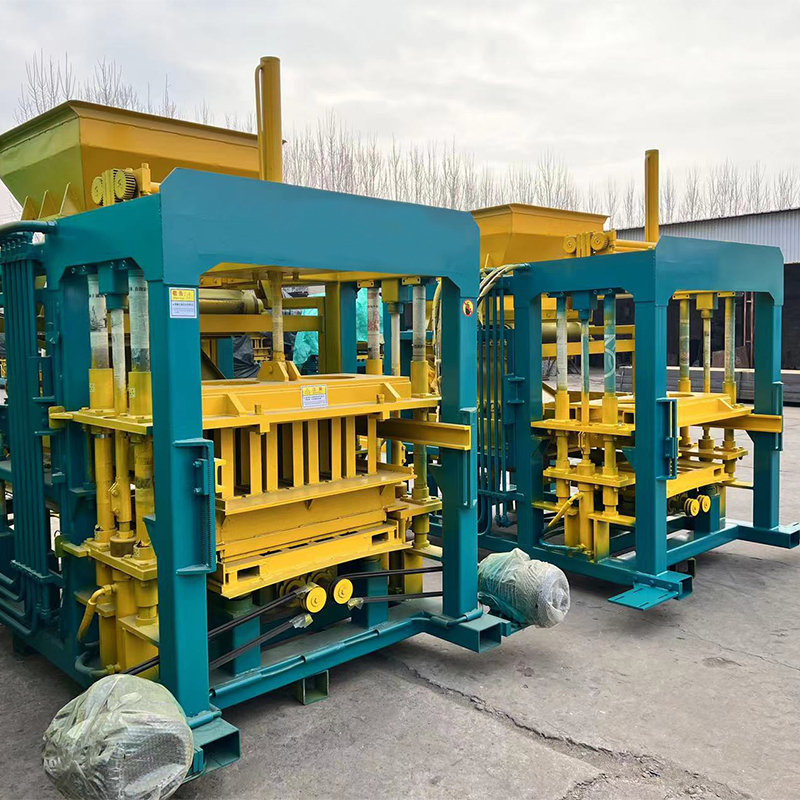
Image source :Aiweiblockmachine
New Innovations in Brick Block Machine Equipment
Introduction
The construction industry has seen remarkable advancements in recent years, driven by technology and sustainability trends. One area that has experienced substantial innovation is brick block machine equipment. Traditionally, brick block manufacturing involved labor-intensive processes, but new innovations have brought automation, efficiency, and sustainability to the forefront. This article explores the latest innovations in brick block machine equipment, their impact on construction practices, and the potential benefits for the environment.
- Automated Block Machine Systems
One of the most significant advancements in brick block machine equipment is the integration of automation and smart technologies. Automated block machine systems can handle various tasks, including material feeding, mixing, molding, and curing. These systems are equipped with sensors and programmable logic controllers (PLCs) that enable precise control over the entire production process.
With automation, brick block manufacturers can achieve higher production rates, reduce labor costs, and ensure consistent product quality. Additionally, remote monitoring and data analysis capabilities improve maintenance, troubleshooting, and overall machine efficiency.
- Hydraulic Press Technology
Traditional brick block manufacturing relied on manual or mechanical presses, which had limitations in terms of pressure control and production output. However, recent innovations in hydraulic press technology have revolutionized the industry. High-pressure hydraulic systems enable the production of bricks with higher density, strength, and uniformity.
Hydraulic press machines can apply even pressure across the entire block surface, reducing defects and improving the overall quality of the final product. Furthermore, these machines are energy-efficient and minimize material wastage, making them a sustainable choice for brick block production.
- Interlocking Brick Machines
Interlocking bricks have gained popularity in construction due to their unique design, which allows them to fit together like puzzle pieces without requiring mortar. Interlocking brick machines have been developed to manufacture these eco-friendly bricks efficiently.
These machines use a combination of hydraulic pressure and precision molds to create interlocking bricks of various sizes and shapes. The interlocking design enhances the structural integrity of buildings, reduces construction time, and eliminates the need for skilled laborers to apply mortar during bricklaying.
- High-Strength Compressed Earth Blocks (CEBs)
Compressed Earth Blocks (CEBs) are gaining traction as a sustainable alternative to traditional fired clay bricks. CEBs are made from a mixture of clay, sand, and stabilizers, and their production requires significantly less energy compared to fired bricks.
Innovative block machine equipment can produce high-strength CEBs with precise dimensions and improved durability. By utilizing locally available materials and reducing the carbon footprint, CEBs contribute to environmentally friendly construction practices.
- Mobile Brick Block Machines
To cater to the growing demand for construction in remote areas or disaster-stricken regions, mobile brick block machines have emerged as a practical solution. These compact and easily transportable machines can be set up on-site, reducing transportation costs and environmental impact.
Mobile brick block machines can produce a variety of blocks, including concrete blocks, interlocking bricks, and CEBs. They provide flexibility and accessibility to construction projects, allowing builders to adapt to various site conditions and minimize logistical challenges.
- Incorporation of Recycled Materials
In the pursuit of sustainability, brick block machine manufacturers are incorporating recycled materials into the production process. By using recycled aggregates, such as crushed concrete or industrial waste, manufacturers reduce the demand for raw materials and minimize waste disposal.
Innovative block machine equipment can effectively process and mix recycled materials, ensuring the final blocks meet quality standards. The adoption of recycled materials aligns with the principles of the circular economy and contributes to a greener construction industry.
- Hybrid Energy Sources
Addressing environmental concerns, some brick block machine equipment manufacturers are incorporating hybrid energy sources into their machines. By combining conventional power sources, such as electricity, with renewable energy sources like solar panels, these machines reduce energy consumption and carbon emissions.
Hybrid-powered block machines can operate efficiently in areas with limited access to the grid or during power outages. Additionally, they contribute to lower operating costs and demonstrate a commitment to sustainable practices.
- 3D Printing Technology
While still in the experimental stages, 3D printing technology has shown promise in brick block manufacturing. 3D printers equipped with cementitious materials can create intricate brick designs that were once challenging to achieve through conventional methods.
The advantages of 3D printing include reduced material wastage, design flexibility, and faster production times. However, widespread adoption will depend on overcoming technical challenges and optimizing the materials for structural integrity and durability.
Conclusion
The latest innovations in brick block machine equipment have revolutionized the construction industry by streamlining production processes, enhancing sustainability, and promoting eco-friendly practices. Automated systems, hydraulic press technology, interlocking brick machines, CEB production, and incorporation of recycled materials are some of the remarkable developments shaping the future of brick block manufacturing. As these innovations continue to evolve, they hold the potential to reshape construction practices and create a more sustainable built environment for generations to come.
